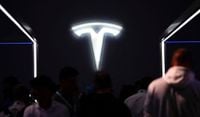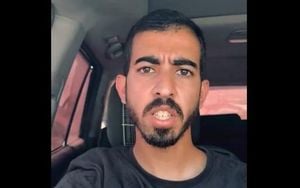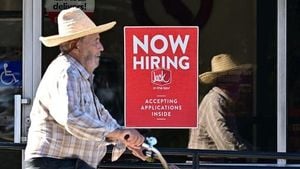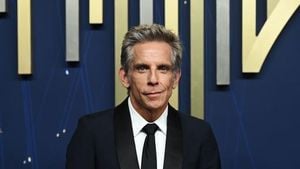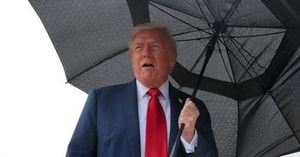Tesla’s much-hyped Full Self-Driving (FSD) technology is under the microscope once again, as U.S. federal regulators have launched a sweeping investigation into nearly 2.9 million vehicles equipped with the company’s advanced driver-assistance systems. The National Highway Traffic Safety Administration (NHTSA) announced on October 9, 2025, that its Office of Defects Investigation had initiated a probe following a string of alarming incidents, including crashes, injuries, and reports of Teslas running red lights or veering into oncoming traffic.
According to a filing on the NHTSA’s website, the investigation targets both “FSD (Supervised)” and “FSD (Beta)” versions—software that Tesla touts as a step toward full autonomy but which, crucially, still requires “a fully attentive driver who is engaged in the driving task at all times.” The agency has received reports of 58 safety violations linked to Tesla’s FSD systems, which include more than a dozen crashes and fires, leading to 23 injuries. Some of the most troubling incidents involve vehicles allegedly barreling through red traffic signals or initiating dangerous lane changes into opposing traffic.
As reported by multiple outlets, including CBS News and Reuters, U.S. regulators have been investigating Tesla’s automated driving systems for over three years, spurred by dozens of crashes that raised serious safety concerns. One particularly tragic case occurred in the Seattle area in 2024, when a Tesla operating with Full Self-Driving killed a motorcyclist. This and similar incidents have only intensified scrutiny of Tesla’s claims and the real-world performance of its technology.
“The ultimate question is, ‘Does the software work?’” asked Seth Goldstein, a Morningstar analyst who currently has a “sell” rating on Tesla shares. For many lawmakers and safety advocates, the answer remains unclear—and potentially troubling. The ongoing investigation is not limited to just the FSD system; Tesla’s “summon” technology, which allows drivers to call their cars to pick them up autonomously, is also under separate review after reportedly causing minor collisions in parking lots.
Another front in the regulatory battle opened in August 2025, when NHTSA began looking into claims that Tesla has failed to promptly report crashes involving its vehicles, as required by federal rules. These multiple probes underscore a pattern of concern about whether Tesla’s rapid rollout of driver-assistance features has outpaced the company’s ability—or willingness—to ensure robust safety protocols and transparent reporting.
As The Verge and Automotive News have noted, the current NHTSA investigation covers all Tesla models equipped with FSD or its earlier Beta version, a pool estimated at about 2.88 million vehicles. The agency’s Office of Defects Investigation has opened a Preliminary Evaluation to determine whether drivers had sufficient warning or time to respond to unexpected vehicle behavior. Investigators will also assess how well FSD recognizes and reacts to traffic signals, lane markings, and road signs, as well as how it alerts drivers about its intended actions.
The incidents under review span a wide range of hazardous scenarios. According to NHTSA, 44 separate incidents have been linked to Tesla vehicles using FSD, including cases where the system reportedly ran red lights, veered into oncoming traffic, or made other risky maneuvers that led to crashes—some with injuries. These reports have fueled growing skepticism among both the public and policymakers about the safety of advanced driver-assistance technologies, especially when they are marketed as nearly autonomous.
Despite these concerns, Tesla CEO Elon Musk remains steadfast in his vision. He has repeatedly promoted FSD as a pathway to fully autonomous “robotaxi” capabilities, promising to put hundreds of thousands of self-driving Tesla cars and Tesla robotaxis on roads by the end of 2026. Yet, as of now, that vision remains unrealized. Tesla is currently trialing a Robotaxi-branded ride-hailing service in Texas and other locations, but the vehicles still require human safety drivers to monitor the system and intervene if necessary.
In a recent product update, Tesla rolled out FSD version 14.1 to customers, touting improvements and new features. However, the company has also acknowledged that future upgrades will require both new hardware and software, suggesting that a truly autonomous system is still some distance away. Tesla did not immediately respond to requests for comment about the ongoing investigations.
The regulatory scrutiny comes at a time of internal and external pressures for both Tesla and the agencies tasked with overseeing vehicle safety. According to reports, staff cuts earlier in 2025 at NHTSA—reportedly influenced by directives from Musk and former President Donald Trump—may have affected the agency’s capacity to keep up with the rapidly evolving landscape of autonomous vehicle technology. This has raised concerns among safety advocates about whether regulators have the resources and authority they need to effectively police the industry.
Meanwhile, lawmakers in California are preparing to implement a new law that would hold driverless car companies accountable for traffic violations, set to take effect next year. Such legislative efforts reflect a growing consensus that existing frameworks may be inadequate to address the unique challenges posed by autonomous and semi-autonomous vehicles.
Investors, too, are watching closely. On the day NHTSA’s investigation was announced, Tesla shares fell by 1.4%, reflecting market jitters over the company’s regulatory headwinds and the uncertain timeline for realizing its autonomous driving ambitions. As Seth Goldstein of Morningstar put it, “The ultimate question is, ‘Does the software work?’” With so many eyes on Tesla—and the stakes so high for both public safety and the future of transportation—there is little room for error.
For now, Tesla owners are reminded that FSD, despite its name, is not a hands-off system. The company’s own instructions require drivers to remain alert and ready to take control at any moment. As the NHTSA’s investigation unfolds, the coming months will likely determine not just the fate of Tesla’s self-driving dreams, but also the broader trajectory of autonomous vehicles in the U.S. and beyond.
With regulators, lawmakers, investors, and the public all waiting for answers, the next chapter in the Tesla FSD saga is sure to be closely watched. Whether the technology can live up to its promise—or if the risks will outweigh the rewards—remains to be seen.
